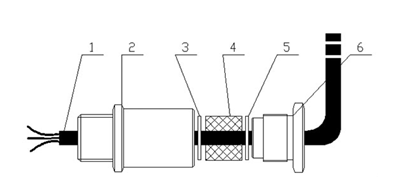
The introduction device, also known as the incoming device, is a transitional device for the wires or cables of external circuits to enter explosion-proof electrical equipment. The introduction device is often regarded as the weakest link in explosion-proof electrical equipment, and its sealing is very important.
There are three commonly used sealing structures for the introduction device:
1. Sealing ring type introduction device;This introduction device is widely used, including pressure plate type and clamping nut type introduction devices(Commonly known as horn mouth);
2. Sealing type introduction device for casting and solidifying fillers;
3. Metal sealing ring type introduction device.
Cable entry device refers to a device that introduces cables into electrical equipment without changing the explosion-proof type of the equipment.
In industrial environments with hazardous gases or dust,Zhongnuo TestingSpecific requirements have been put forward for the explosion-proof and protection level of the instruments and meters used. The cable entry device is an important part of the instruments and meters. This device alone meets the explosion-proof and protection level requirements. When other parts of the instruments and meters meet the on-site requirements, instruments equipped with this device can fully meet the explosion-proof requirements.
Firstly, the cable entry device should comply withGB3836. 1-2010The standard adopts a compression sealing method that meets the sealing and explosion-proof requirements. The material can be selected according to the on-site usage environment, and factors such as magnetic conductivity and corrosion resistance need to be considered. Commonly used include high-quality low-carbon steel or acid resistant stainless steel, environmentally friendly copper nickel plating, and so on.
In addition to complying with national standards and facilitating interchangeability, threads should also meet sealing requirements,Zhongnuo TestingIt is recommended to use sealed cone pipe threads, and the number of engagement threads should be greater than8And there are also certain requirements for the fitting accuracy of threads, such as6H6g.
What needs to be emphasized is the sizeф DxAmong them, tolerance is very important, and it needs to be based on the outer diameter size of the sealing elementф ATo determine, it affects the overall sealing effect. Due to the large deformation of rubber products, the dimensional accuracy will be lower; This requiresф DxTo meet all rubber seals as much as possible, but it does not mean that фDxThe stricter the tolerance, the better, and it is best to introduce a single-sided gap between the terminal and the seal0.05~0.1mmBetween.
In addition, the wall thickness must also meet the explosion-proof requirements; The materials of the upper and lower gaskets should meet the requirements of the usage situation, and their functions are to cushion deformation.
The sealing element is the key to achieving the sealing effect of this device, and the material of the sealing element is generally nitrile rubber or silicone rubber,Zhongnuo TestingIt can also be changed according to different application scenarios.
Pressing the terminal is the final step in the entire cable entry device. The length of the screw in terminal should be able to fully compress the upper gasket, sealing element, and lower gasket, so that the deformation of the sealing element meets the sealing requirements; In addition, the sealing components need to undergo an aging test. After the entire device is assembled, an airtightness test needs to be conducted to verify whether it meets the airtightness requirements.
The length of each explosion-proof joint surface should meet the explosion-proof requirements and be coated with anti rust oil; The engagement length of each explosion-proof thread meets the requirementsexplosion-proofRequirements.

Cable entry device
Among them:1-coaxial cable2——Introducing terminals3——Upper gasket4-Seals5——Lower gasket6——Compression terminal
The copyright of this article belongs to Zhongnuo Testing. The right to pursue plagiarism and theft will be reserved. Reproduction must indicate the source of the original text.